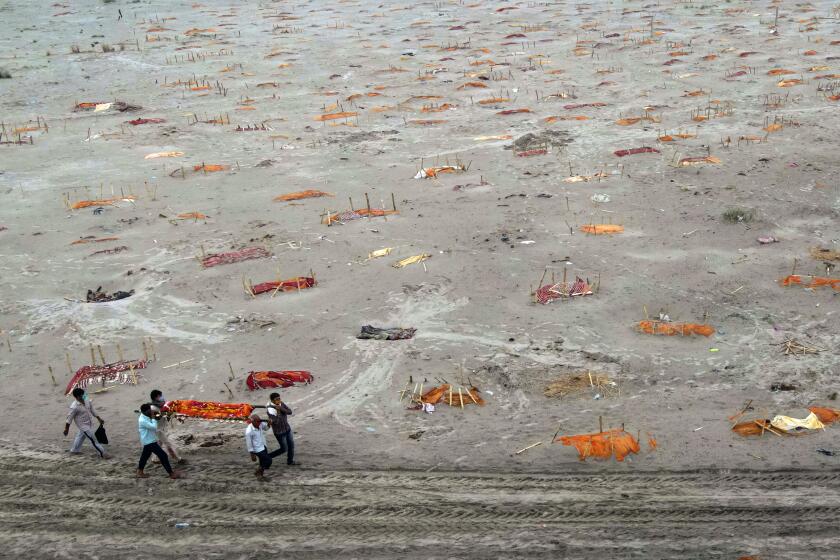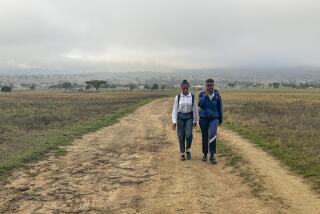A lost generation: India’s COVID crisis reverses decades of progress for children
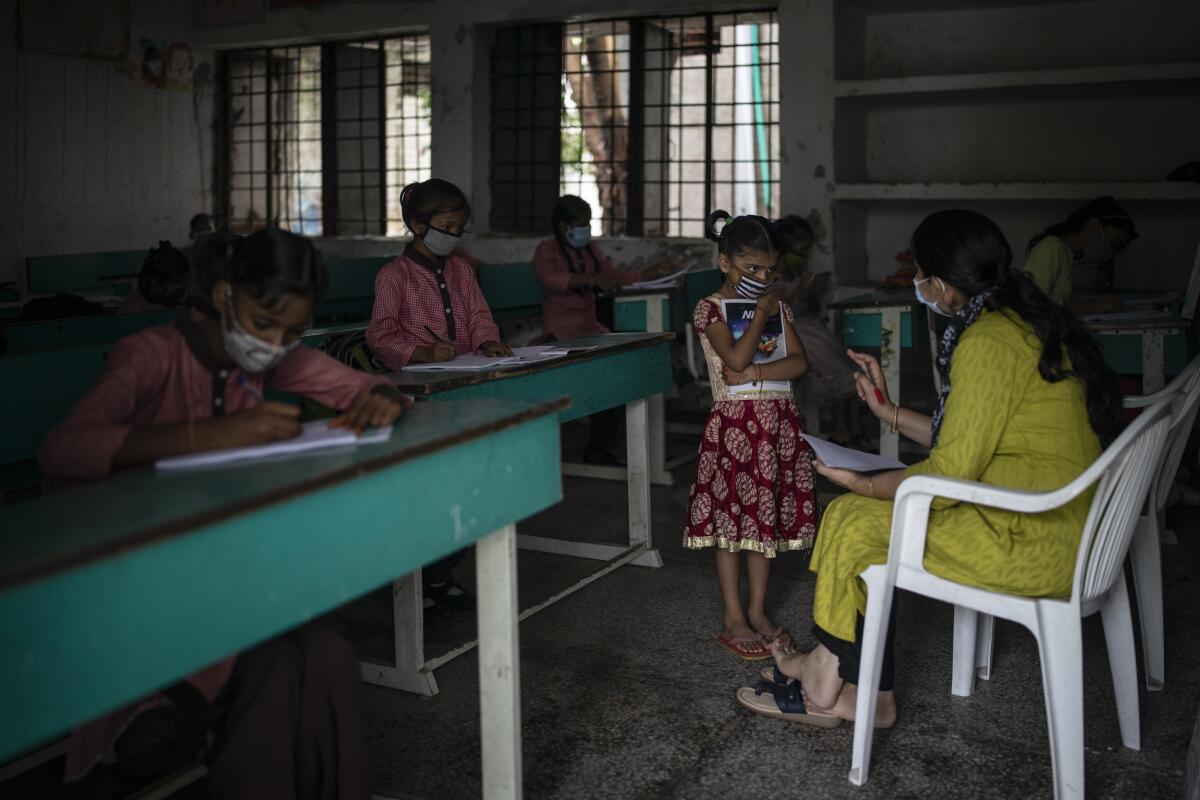
- Share via
MUMBAI, India — Amid crumbling walls and tiny classrooms, the students in Jyoti Patole’s school used to crowd together on wooden benches not much wider than handrails. Books were old, supplies sparse. The teachers were overburdened.
But the 17-year-old from Limbgaon, a remote village in India’s western state of Maharashtra, would trade anything to be with her classmates again. Her school, like most others in India, has been closed since the opening months of the pandemic last year. She was offered online classes, but her family could barely afford two meals a day, let alone internet access.
What little hope she had of completing an education and escaping a life of poverty was further dashed when her father died of COVID-19 in May. To feed the family of four, someone had to take his place. Patole bore the responsibility. She is now preparing to join her mother as a migrant worker this fall, traveling hundreds of miles south to harvest sugar cane fields.
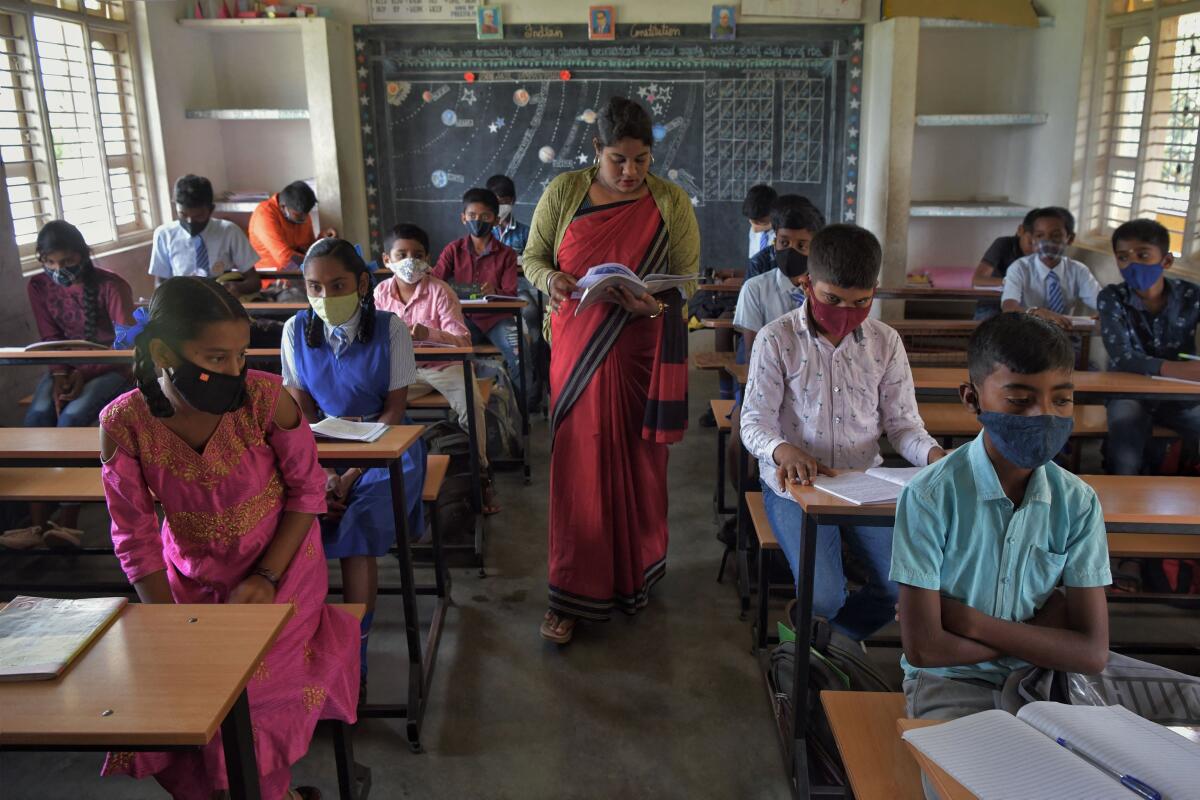
“I have never chopped cane before, but I will learn,” Patole said of the work, which requires carrying bundles of sugar cane stalks weighing more than 50 pounds for up to 16 hours a day. “I would have liked to study further. But I must help my mother.”
Few nations have been ravaged by the pandemic like India, the first country to be hit by a major outbreak of the Delta variant. Officially, the disease has killed more than 400,000 people, though experts believe the toll to be orders of magnitude higher. The damage and lingering trauma are evident everywhere, from the legions of unemployed workers roaming the streets, to the growing mental health crisis that the disease has left in its wake.
But Patole’s misfortune highlights another consequence of the pandemic, one that might not be fully felt for years. She and millions of other school-age rural children are in danger of becoming a lost generation — locked out of the classroom for so long that they tumble into lives of deprivation and struggle that previously doomed their parents.
Children peek out from fields and kilns. They hustle wares on dusty streets. They take jobs with food vendors. They weave carpets in back alleys and sweep trash from the roadsides. Sometimes they die, often they are maimed. But they are legion, forced to grow up in a land where childhood is more of a luxury than a rite of passage.
“Education is one of the major ways in which you can get out of poverty,” said Kapil Patil, a Maharashtra state lawmaker representing teachers. “A vast chunk of this generation has lost that opportunity. Post-pandemic, we will see a labor force of half-literate youngsters from marginalized sections of society who will be exploited even more.”
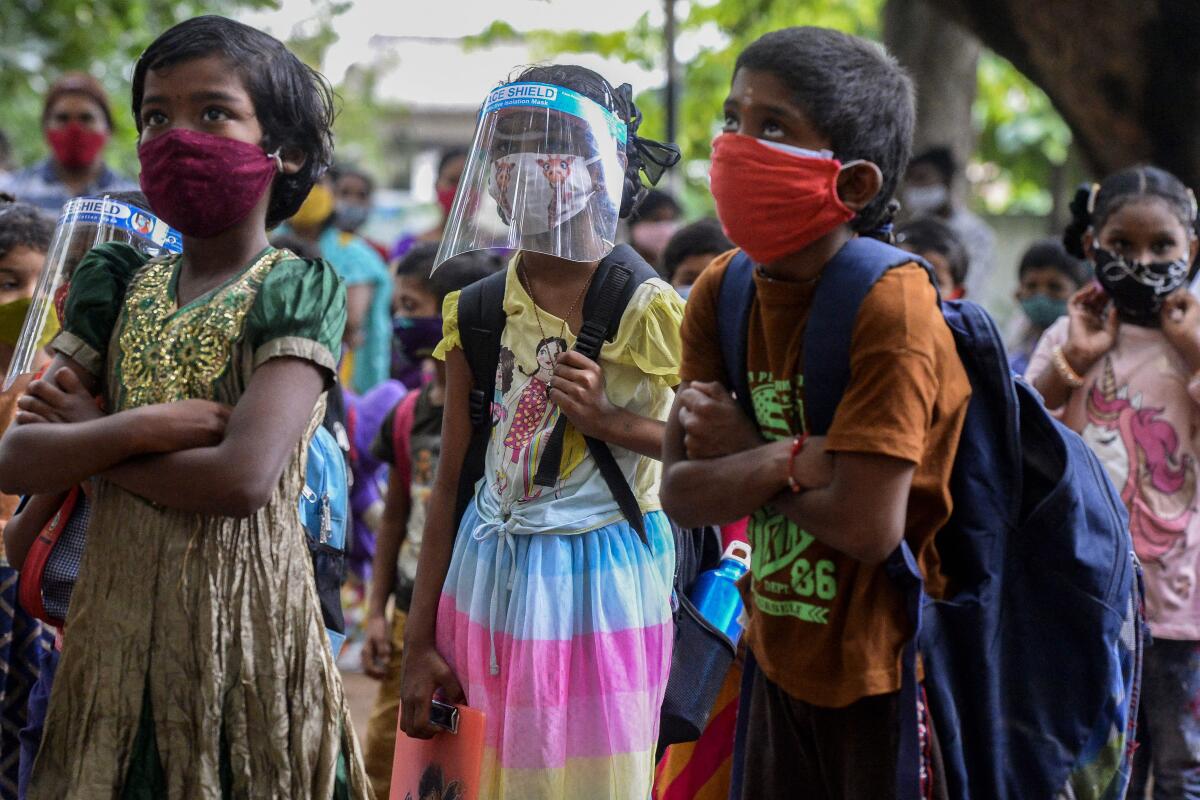
Schools are slowly reopening in India 18 months after the government ordered them shut to stop the spread of COVID-19. Many are watching to see if enrollment rebounds or if millions of students like Patole have succumbed to the pressure to drop out, a scenario that will have a lasting impact, not only on children, but also India’s battered economy and falling household incomes.
Bodies are piling up by the Ganges, but lack of government data is obscuring the true extent of COVID-19 in rural India.
When India amended its constitution in 2002 to make school compulsory for all children ages 6 to 14, it sparked a boom in enrollment that led to a decline in child labor and child marriages. Malnutrition also receded with the introduction of subsidized school meals.
Those successes were achieved despite crushing inequalities between the nation’s urban and rural schools. Public education remains woefully underfunded in the countryside, home to nearly 70% of India’s 1.3 billion people.
It’s not unusual for rural schools to lack electricity. The responsibilities of teachers in rural regions stretch far beyond the classroom. They also serve as poll workers, census workers and help roll out government schemes such as sanitation campaigns. As a result, only a fraction of rural students meet national standards for reading comprehension and arithmetic.
School closures are erasing slight educational gains, studies show, particularly as children in villages are shut off from remote learning. Only one-third of India’s rural population has internet access, according to the Internet and Mobile Assn. of India, and those people who do don’t often have the luxury of sharing their mobile device with their children.
“I tried to follow lectures on my friend’s smartphone but it was difficult to keep up,” said Sagar Kumbhar, a 16-year-old in Terkheda, a village in southern Maharashtra, India’s second-most crowded state.
Kumbhar’s family couldn’t fathom owning a smartphone. They eke out a living making and selling earthen pots. Their monthly earnings have dwindled from $100 to $20 ever since local street markets were closed last year for COVID-19 restrictions.
Kumbhar is resigned to his new life working on his parents’ one-acre farm and earning extra money helping other growers plant crops since the start of the monsoon season. School feels like a distant memory, and the pressure to contribute to his family grows each day.
“The adults in the family have lost work. A lot of the burden, therefore, has fallen on the shoulders of children,” said Santosh Shinde, a member of the Maharashtra state commission for the protection of children’s rights. “Parents feel that their kids’ time would be best utilized if they worked and earned some money to ease the financial crunch on the household. I fear that once the kids get used to having cash in hand, it will be tough for them to return to school. The past year and a half has reversed decades of progress.”
The rise in child labor and school dropouts will only widen the gap between rich and poor. While children with means have kept up with their studies through online classes, marginalized children have lost touch. As a result, the ranks of India’s undereducated masses will swell, stymying attempts to revive and modernize the world’s sixth-largest economy.
It’s not just dreams of academic advancement that were stunted by the pandemic. Vijay Segar, 17, moved 70 miles from home to Osmanabad in eastern Maharashtra to join a wrestling training center in hopes of turning pro in the popular sport, known in Maharashtra as kushti.
Indians are blaming a national government that did not prepare for a second wave. Officials are now scrambling to distribute supplies.
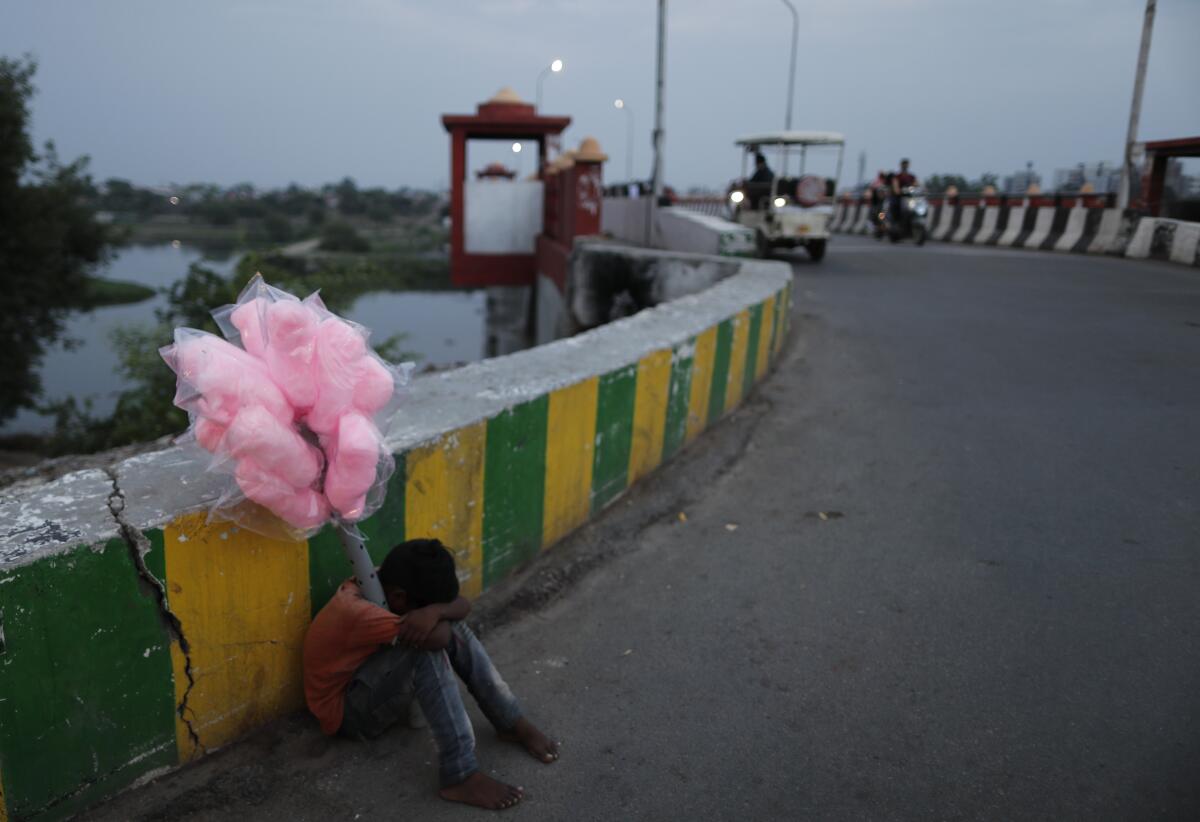
Since the center closed, he and his 14-year-old cousin have been working at a street food stall selling misal pav, a local favorite of curry and bread rolls.
Segar’s parents are street performers and can’t afford to send money. And he’s getting by with one free meal a day provided by his boss — a far cry from the 1.5 liters of milk and eight eggs he used to consume a day to keep in wrestling shape.
“I’m running out of time. If I don’t get to play tournaments, how will I succeed?” said Segar, who has also stopped with schoolwork because he doesn’t own a smartphone. “I don’t want to work at the street food stall forever.”
His cousin’s employment is illegal. Indian law prohibits children 14 and younger from working. But as desperation grows during the pandemic, employers are increasingly willing to look the other way for younger and cheaper labor.
There are 10.1 million children in India toiling in fields and descending into mines, among other forms of often dangerous work, according to the nation’s most recent census in 2011. Anecdotal evidence suggests the number has risen dramatically since the pandemic.
Vishal Khandagale was 14 when he started working at a brick kiln after his school closed last year.
“I dropped out of school to help my mother,” said Khandagale, who wore flip-flops, jeans and a tatty checkered shirt as he worked at a kiln in the small town of Beed in Maharashtra. “My father is no more. So I have to share some responsibility with my mother.”
He earns $3 a day lifting heavy bricks, balancing them on his head as he loads truck after truck: “They can sometimes fall and you can get injured,” he said. “But I try to be as careful as possible.”
India’s Labor Ministry said last month that more than 58,000 children had been rescued from child labor and placed in rehabilitation programs in the 2020-2021 fiscal year, up from 50,000 the previous fiscal year. The increase comes as the global fight against child labor has stalled for the first time in two decades, according to a recent report by the International Labor Organization and UNICEF, which placed the number of child laborers worldwide at 160 million.
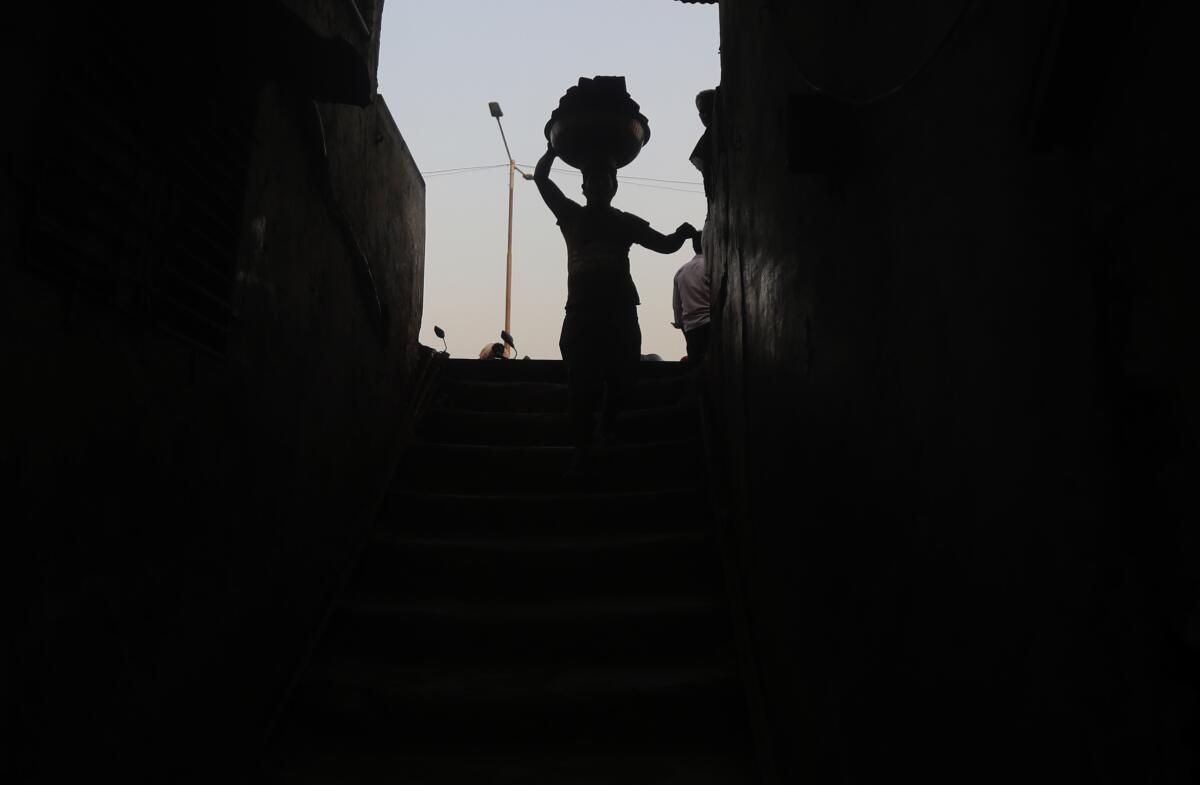
The United Nations agencies estimate the pandemic and weak economic conditions will drive an additional 8.9 million children into work by the end of 2022.
Many will fall into farming like Patole, who is bracing for six months of hard labor when she migrates to the southern state of Karnataka to harvest sugar cane. If all goes well, she’ll take home $500 at the end of the season. But dangers abound. Workers are regularly injured cutting stalk.
There’s no telling how different Patole’s life would be had she stayed in school. Her teachers say she was a quiet student, but showed no trouble learning. She grasped instruction quickly and she loved to make embroidery during the times she didn’t have to help with household chores.
Patole’s father encouraged her to pursue her education — anything to avoid his fate as a migrant worker. He tested positive for COVID-19 in April and spent his final days at a government hospital 20 miles from home. The eldest sibling, it fell to her to replace her father’s lost earnings. Frail and skinny, Patole will have to muster all her strength to survive her first season on the sugar cane fields.
“The face of the pandemic is not a child’s face like it is for measles or rubella,” said Dr. Yasmin Ali Haque, director of UNICEF India. “But the pandemic has turned the lives of children upside down. They’re not going to school, they’re seeing the stress in their family, and they’re not able to interact with their peers. All of the things that are part of childhood have ground to a halt.”
Times staff writer Pierson reported from Singapore and special correspondent Parth M.N. from Mumbai.
Reporting for this article was supported by a grant from the Pulitzer Center.
More to Read
Sign up for Essential California
The most important California stories and recommendations in your inbox every morning.
You may occasionally receive promotional content from the Los Angeles Times.
